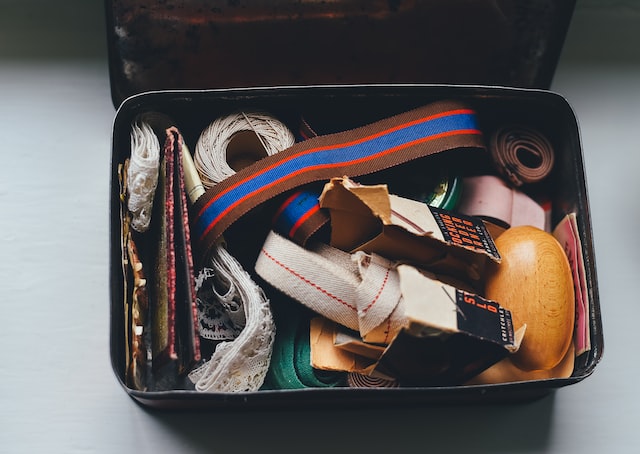Sewing is a great hobby that can be both relaxing and rewarding. But for those new to the craft, it can be daunting to figure out where to even begin. Fortunately, with the right tips and tricks, you can have your sewing box organized in no time! In this article, we’ll provide some best tips for organizing a sewing box. So you can start creating beautiful projects quickly and easily.
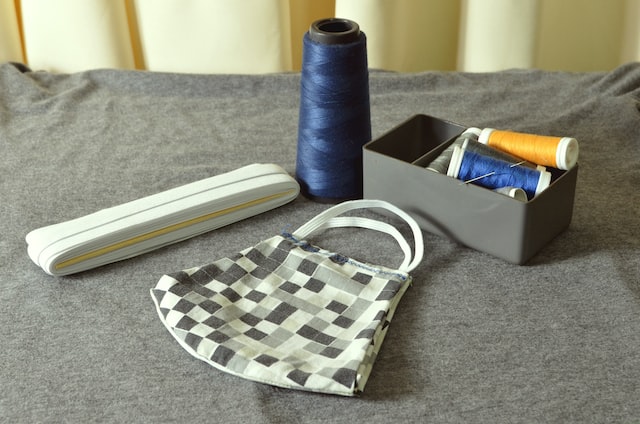
Introduction to Sewing Boxes
A sewing box is a wonderful way to keep your sewing supplies organized and ready. But with so many different types and sizes of sewing boxes available, it can be difficult to know where to start when choosing one for yourself. Here are a few tips to help you pick the perfect sewing box for your needs:
First, consider what type of sewist you are. Do you prefer hand-sewing or machine-sewing? If you do a lot of hand-sewing, you’ll want a box that has plenty of compartments and pockets to keep all of your supplies neatly organized. If you primarily use a sewing machine, on the other hand, you’ll need a larger box to accommodate your machine and all of its accessories.
Once you’ve decided on the type of sewist you are, it’s time to think about what size sewing box will work best for you. If you have a small space to work with, go for a compact box that can easily be stored away when not in use. If you have more space available, opt for a larger box that will give you plenty of room to spread out and work.
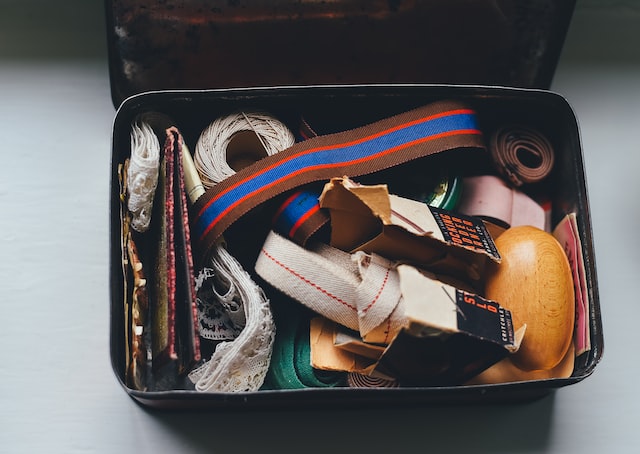
Finally, take into account your budget when choosing a sewing box. There are many great options available at all different price points, so find one that fits both your needs and your budget. With these tips in mind, you’re sure to find the perfect sewing box for your next project!
Benefits of a Well-Organized Sewing Box
A well-organized sewing box can save you time and frustration when you’re looking for a specific item. It can also help you keep track of your supplies so you know what you have and what you need to purchase. Here are some benefits of keeping a well-organized sewing box:
- You’ll save time when you’re looking for a specific item.
- You’ll be able to easily see what supplies you have on hand.
- You can avoid buying duplicates of items you already own.
- Your sewing area will look neater and more inviting.
- You’ll feel more motivated to sew when everything is in its place.
Tips for Organizing a Sewing Box
Assuming you don’t have an infinite amount of storage, the key to organizing your sewing box is knowing what you have and where it is.
A good place to start is by sorting your materials into categories such as thread, fabric, patterns, etc. Once you have everything sorted, you can begin to put things away in an organized manner.
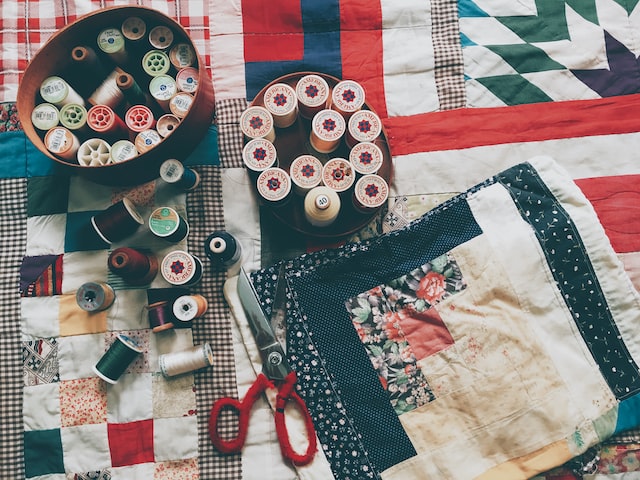
Thread can be stored in small plastic boxes or on spools. Fabric can be folded and stored in larger plastic containers or bins. Patterns can be placed in manila envelopes and kept in a file box.
The most important thing is to keep track of what you have and where it is. A simple labeling system will help you do this. Once you have everything sorted and labeled, you’ll be able to find whatever you need quickly and easily!
What Items to Keep in a Sewing Box
A sewing box is a great way to keep your sewing supplies organized and within easy reach. But what items should you keep in your sewing box? Here are some essential items to consider:
- Scissors: A good pair of scissors is a must for any sewer. You’ll need them for cutting fabric, thread, and other materials.
- Pins and needles: You’ll need pins to hold the fabric in place while you sew, and needles to stitch it all together.
- Measuring tape: A measuring tape will come in handy for measuring fabric and taking precise measurements of seams.
- Seam ripper: A seam ripper is a lifesaver for fixing mistakes or undoing stitches.
- Thimble: A thimble helps protect your finger from the needle while you sew.
- Thread: Different colors and types of thread will be needed for different projects. Be sure to stock up on a variety of options.
Different Types of Sewing Containers:
- Boxes: Boxes are a great option for storing sewing supplies because they are usually quite spacious and can be stacked on top of each other. You can find boxes made specifically for sewing at many craft stores.
- Baskets: Baskets are another good option for sewing storage. They come in a variety of sizes and can often be found at discount stores or second-hand shops.
- Drawers: If you have a dresser or other type of furniture with drawers, you can use these to store your sewing supplies. Just be sure to label the drawers so you know what goes where!
- Storage Containers: There are many different types of storage containers available that would work well for storing sewing supplies. Look for ones that have multiple compartments so you can keep things organized.

How to Use the Right Containers for Your Supplies
When it comes to organization, the type of containers you use for your supplies can make a big difference. Here are some tips for choosing the right containers for your sewing box:
- Consider the size of your supplies. You’ll want to choose containers that are large enough to hold all of your supplies, but not so large that they’re difficult to move around or take up too much space.
2. Think about what type of access you need to your supplies. If you need to be able to see and reach everything easily, clear plastic containers might be a good option. If you don’t mind rummaging through a box to find what you need, then something like a fabric bin could work well.
- Choose durable containers that will withstand repeated use. Sewing supplies can be heavy and sharp, so you’ll want to make sure your containers can stand up to the weight and wear and tear.
4. Label your containers so you know where everything is at a glance. This will save you time and frustration when you’re looking for something specific.
5. Finally, don’t forget about aesthetics! Choose containers that complement the look of your sewing area and make it feel inviting and organized.
DIY Organization Solutions
If you’re anything like me, your sewing box is a complete disaster. But never fear! With these easy DIY organization solutions, you can get your sewing space organized in no time.
First, let’s tackle the biggest problem: fabric scraps. There’s no need to keep every single scrap of fabric you’ve ever used – but it can be tough to know what to toss and what to keep. A simple solution is to invest in a small notebook, and whenever you finish using a piece of fabric, jot down a quick note about what it was used for. That way, you’ll always have a record of your projects and can refer back to it when deciding whether or not to keep a particular scrap.
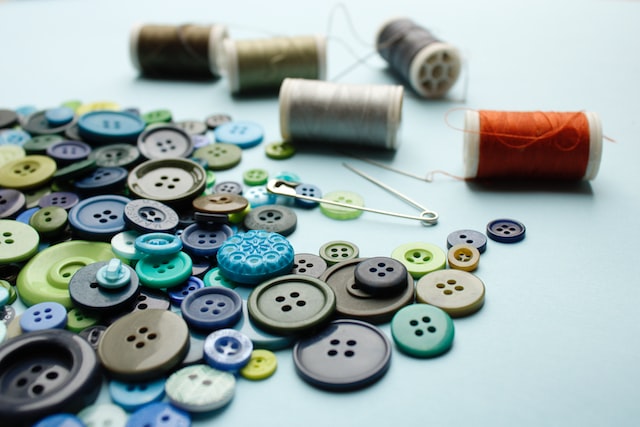
Next, let’s deal with those pesky spools of thread. They always seem to end up in a tangled mess, making it impossible to find the right color when you need it. The best way to keep them organized is with a thread rack – you can pick one up at any craft store, or even make your own out of popsicle sticks! Simply thread the spools onto the sticks and voila – instant organization.
Finally, let’s talk about needles. If you’re like most sewers, you have an assortment of different needles for different purposes. Keep them sorted and easy to find by storing them in an old pill bottle or similar container. Label the outside with the type of needle so you can grab exactly what you need when it
Conclusion
Keeping a sewing box organized and tidy can be a great way to make sure that you always have the necessary supplies on hand when you need them. By following our tips, you should now have all of the information needed to organize your own sewing box in an efficient manner. Whether you are just starting out with basic tools or are an experienced seamstress, organizing and maintaining a well-stocked sewing box is essential for any sewer. With these tips, we hope that your next project will run smoothly and without hiccups!

